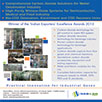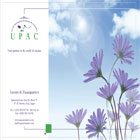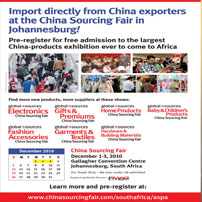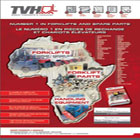

M a r k e t N e w s
LNG Markets Conducive to “Gas to Power” in Africa
Posted on : Thursday, 15th September 2016
Fundamental changes in the international market for liquefied natural gas (LNG) over the past few years have for the first time made gas to power projects practical in those parts of Africa that do not have a domestic supply of natural gas or access to a natural gas pipeline grid to import natural gas from countries that do. These changes to the LNG market, when coupled with the development of floating LNG storage and regasification units (FSRUs) which significantly lowers the cost and time to completion of small scale LNG import terminals, has lead to a surge in proposals for gas to power projects throughout Africa.
For most of its history, the world-wide LNG market was dominated by agreements under under which ran an LGN producer sold large quantities of LNG to a large electric or gas utilities - often government owned—on a long term (15 to 25 years) “take or pay” basis that required the purchaser to pay for the LNG even if it could not use it, with little volume flexibility or ability to resell LNG that was not needed. LNG producers insisted on this structure because it guarantied the producer the revenues it needed to invest billions of dollars to develop a gas field and build a facility to liquefy the gas produced from the field. This structure was acceptable to the utility because it provided assurance of a long term supply of LNG to support its investment of several billions of dollars in LNG receiving and storage facilities, gas pipelines and gas fired power plants.
Although these long term, “take or pay” contracts fostered the development of gas fired power generation in big power markets in Japan and Korea and more recently, China, utilities and other natural gas customers with smaller or more variable needs for gas where largely left out of the market and were forced to rely on coal or diesel or other liquid fuels for power generation. The quantities of LNG they needed were too small to attract the interest of the LNG producers who were looking for long term sales of large quantities of LNG to support their upstream investments, and the inflexible terms the producers offered were not attractive to customers who had more variable gas needs because they were building generation that would be used only intermittently to meet peak power demand or to provide backup generation capacity for solar or wind power or to supplement hydro power in periods of draught. In addition, the cost of building land based LNG import terminals—which often exceeded a billion dollars—made LNG uneconomical for all but the largest natural gas users.
Fundamental changes in the international LNG markets and the use of FSRUs (which are specially equipped LNG regasification and storage vessels which are moored in a port) are now making LNG viable as a source of fuel for projects with smaller or more variable natural gas needs, such as are prevalent throughout much of Africa.
The first significant market change is the development of LNG suppliers selling out of a supply portfolio instead of from a single liquefaction facility. As the LNG industry developed, LNG suppliers committed all of the output of each liquefaction facility to one or two customers and on a “point to point” basis, for example, from a single liquefaction facility in Indonesia to a single user in Japan. However, as major LNG suppliers such as Shell and BP have developed multiple sources of supply, the “point to point” structure of LNG sales has gradually eroded, and many LNG suppliers now sell from a portfolio, rather than from a specific source. These suppliers include the historic LNG producers such as the major oil companies as well as companies engaged in the marketing of LNG such as the Japanese trading companies and even some financial institutions. This allows suppliers to provide more flexibility in their supply terms and has gradually led to a more vibrant “spot” market in which uncommitted LNG cargos are available for purchase outside of the normal year ahead scheduling cycle.
However, the most significant change in the LNG markets is the result of growth of LNG supply that has outstripped growth of LNG demand. The development of LNG export facilities in the United States to export the growing volumes of shale gas, and the commencement of operation of Chevron’s Gorgon facility and other large LNG liquefaction facilities in Australia has lead to a supply-demand imbalance that favors LNG customers. This is a trend that may, in time, be augmented by more recent discoveries of natural gas in Africa such as those made in Mozambique. This imbalance has been made worse by the slow down of the Chinese economy, changes in Korean energy policy away from natural gas and the start up of several Japanese nuclear plants. In addition, many of the early purchasers of LNG or LNG liquefaction capacity from the US export terminals purchased more LNG than they currently need either because their internal needs have grown more slowly than anticipated or because they over-purchased in the expectation that LNG prices would go up and they could resell the excess at a profit. Many of these purchasers are now trying to sell their excess LNG in the secondary market and have become LNG marketers by default.
As a result of the current over supply of LNG, many LNG suppliers, including the large suppliers such as the major oil companies, are seeking out customers that they never would have bothered with before and are offering volume and scheduling flexibility which was previously available only for a very high price, if it was available at all. These changes has made LNG viable, for the first time, as a source of fuel for customers building smaller scale power plants or building power plants with variable fuel demands.
The development of portfolio LNG suppliers and the over supply of LNG has coincided with the acceptance of FSRUs as an alternative to land based LNG import terminals. Although the FSRUs currently in the market do not provide enough LNG storage capacity for large natural gas customers, they are significantly cheaper (in many cases by a factor of three or four) than land based facilities, and since they are built in a ship yard and floated to the site, they can be put into service much more quickly than land based facilities without the need for extensive and time consuming permitting. FSRUs can also be financed on an asset finance basis, as they often retain significant residual value. As a result they can provide a medium term solution in countries wishing to use gas to power programmes to catalyse the growth of a wider domestic gas industry (such as South Africa) and to ‘up size’ regasification facilities at a later date, following growth in domestic demand for gas.
How long the current oversupply condition will last is a matter of intense debate. A resent study published by Barclays Capital estimates that LNG demand will again overtake LNG supply by 2019. Other industry analysts believe that the imbalance will extend longer. One variable that is extremely difficult to predict is how many of the LNG liquefaction facilities that have been propose in the United States and are in various stages in their permitting processes and how many of the facilities in Canada that are still being delayed over native rights issues will ultimately be built, and if so, when. Also unclear is when final investment decisions will be taken for the large natural gas discoveries in East Africa and their associate LNG liquefaction facilities.
LNG prices are currently less than 50% of their highs of only a few years ago. Because LNG has often been priced based on the price of oil (often using the Brent oil price index), most of this price decline is attributable to the decline in oil prices which have fallen since 2012 from a high of $126 to a low of $29, and are now hovering around $50. However, the entry of the US into the LNG export market has the potential of changing the structure of LNG prices dramatically. US exports of LNG are priced based on domestic US gas prices, rather than oil, and because of the rapid development of shale gas, US gas prices have been much lower on an energy equivalent basis than oil prices, even throughout most of the oil price decline. As a result, had LNG exports from the US been available, they would have been significantly cheaper than LNG with an oil based price, even after taking into account the costs of liquefaction and transportation, for all but a few months during the period 2010 to the present. Of course, whether this price differential will continue depends on whether the US continues to be over supplied with natural gas.
The changes in the LNG markets and the acceptance of FSRUs to import LNG is making gas fired power generation in Africa possible even for relatively small power generation facilities serving a local or regional market because of lack of a robust electric transmission grid. LNG to power projects are in various stages of development in a number of African countries, including Morocco, Cote d’Ivoire, Ghana, Namibia and South Africa. Some, such as the proposed LNG to power project in Morocco, are large enough to justify a land based import facility. Others, such as the projects in Cote d’Ivoire, Ghana and Namibia are only cost effective using FSRUs. However, for the first time, LNG to power has become an attractive and viable solution to the energy needs of much of Africa.
Source : www.lexology.com





























































